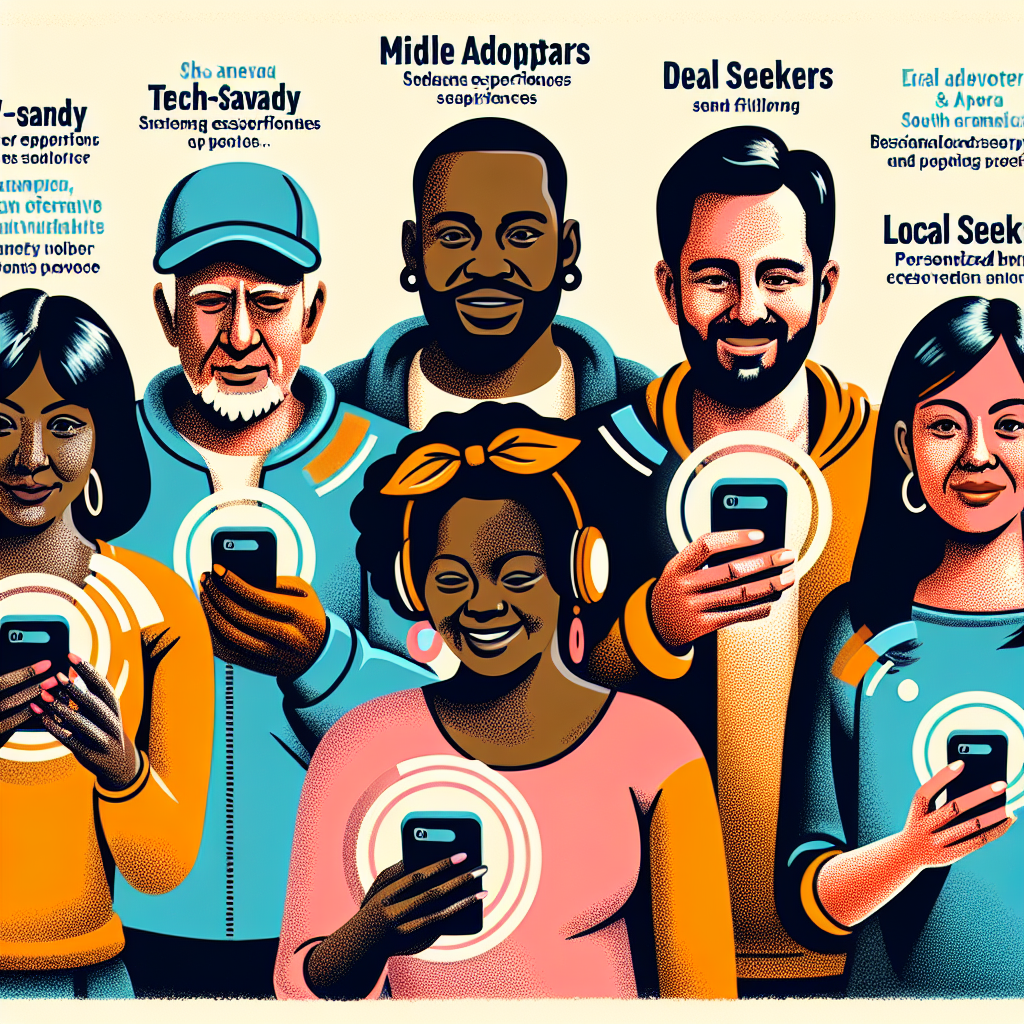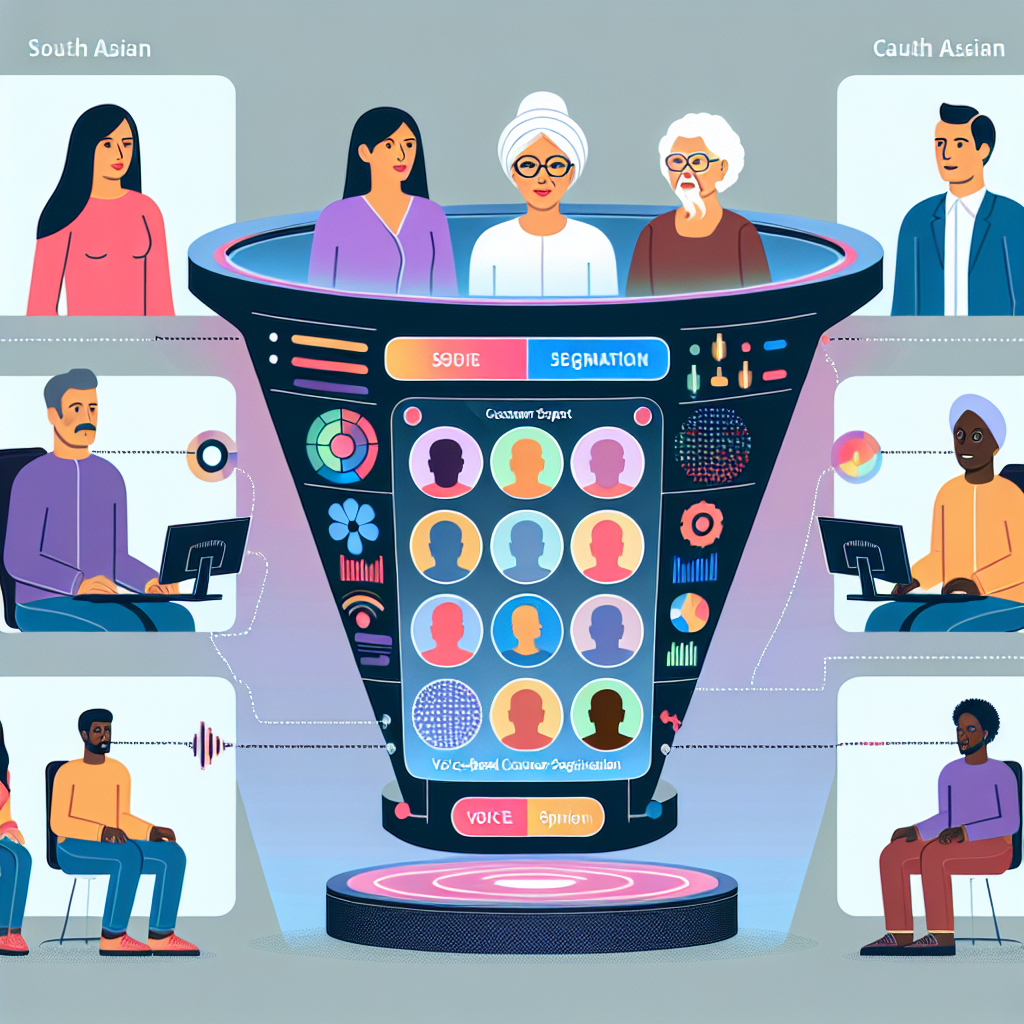
Customer service has evolved significantly in the last decade. Businesses are making substantial efforts to ensure that they provide not just adequate but highly personalized experiences for customers. With the emergence of voice-based customer segmentation, personalizing phone experiences has reached a whole new level.

In essence, voice-based customer segmentation leverages the power of voice data to classify and segment customers into relevant categories. This process is made possible through the application of voice analytics and machine learning algorithms that can analyze customers' tone, speech rate, volume, and other unique traits in their voice. As a result, organizations are able to gain valuable insights into customers' behavior, preferences, and needs, fundamentally contributing to a fully personalized phone experience.
Voice segmentation technology doesn't just stop at personalization. It extends its benefits towards enhancing customer experience as a whole. It empowers businesses to understand and anticipate customer needs more accurately and swiftly. Thus, delivering the right product or service that perfectly aligns with their preferences at the right time. In turn, this enhances customer satisfaction, promotes brand loyalty, and eventually drives business growth.
From the context of business value, the importance of voice-based customer segmentation can't be overstated. It takes the concept of customer service beyond simple issue resolution, to creating a positive, personalized customer journey. The world of customer service is fast-evolving, and voice-based customer segmentation is leading the disruption, resulting in deeply personalized phone experiences.
Technologies such as Artificial Intelligence (AI) and machine learning are at the heart of voice-based customer segmentation, working together to create more personalized and efficient phone experiences.
At the core of these innovative methods lie voice biometrics and speech recognition technologies. Voice biometrics identifies unique vocal characteristics to distinguish between individual customers and segment them based on various factors such as age, gender, or geographic location.
On the other hand, speech recognition comes into play by transcribing and understanding customer dialogues. Through this understanding, the technology works to detect customer sentiments, their preferences, or particular interests, aiding in creating a richer customer profile.
The data gathered through these technologies is further dissected and analyzed via machine learning techniques. These techniques, such as Natural Language Processing (NLP) and clustering analysis, assist in making predictive models based on customer behavior, thus facilitating in offering a more personalized experience.
Furthermore, these innovative, AI-powered technologies are not standalone; they work best in harmony with Customer Relationship Management (CRM) systems and computer-telephony integration (CTI). By working together, these technologies can accurately segment customers and deliver highly tailored experiences over the phone.
In conclusion, AI and machine learning technologies present a new avenue in customer service. Voice-based customer segmentation not only takes call efficiency to a new high but also helps businesses build more personalized relationships with their customers.
Voice-Based Customer Segmentation offers businesses several benefits. This technology helps companies tailor their phone-based interactions to meet the unique needs of each customer, ultimately providing a personalized experience. From increased engagement to improved customer loyalty, the benefits of voice-based customer segmentation are clear.

Firstly, voice-based segmentation fosters increased engagement. By understanding the unique characteristics, preferences, and needs of each customer, businesses can engage them more effectively. A Marketo study revealed that tailored experiences lead to as much as a 200% increase in engagement rate.
Secondly, this technology can boost customer satisfaction rates. According to a Gallup poll, customer satisfaction rates can increase by up to 23% when customers' needs are well-understood and met proactively. This indicates a significant impact of personalized phone experiences on customer satisfaction.
Lastly, through understanding customers' needs and proactively addressing them, customer loyalty can be enhanced significantly. As per Business Wire, a staggering 86% of consumers are willing to pay more for better experiences. Hence, providing a personalized experience through voice-based segmentation can lead to improved customer loyalty and, by extension, increased revenue.
In conclusion, the benefits of voice-based customer segmentation to companies are threefold: increased engagement, higher satisfaction rates, and improved customer loyalty. In this age of personalized digital marketing, businesses that adapt and leverage these tools will surely surpass competitors.
Implementing Voice Segmentation in Business is a transformative strategy that utilizes algorithmic data analysis to separate customers into different segments based on voice characteristics. This technology allows businesses to provide highly personalized phone experiences that are tailored to the unique preferences of their customers.
Integrating voice segmentation within existing phone systems begins with proper data collection. Collection hardware, such as interactive voice response systems, is essential. Interactive Voice Response (IVR) systems facilitate efficient data collection by recording and categorizing voice data from customers.
To analyze the collected voice data, businesses need to invest in voice analysis technology. This technology employs Information Gain (IG) and Chi-square Automatic Interaction Detection (CHAID) algorithms to interpret voice data and accurately segment customers.
Once the right technology is in place, businesses need to weave voice segmentation into their existing operations. This might mean integrating voice analytics with their Customer Relationship Management (CRM) software or Automatic Call Distributor (ACD) systems.
Proper integration allows the output from voice segmentation to drive decision-making in real time. This could result in routing a toll-free number call to the most suitable customer service representative or scheduling a marketing call at the most opportune time. For instance, a customer identified as 'Likely to Purchase' based on voiced sentiment might warrant an immediate response compared to one tagged as 'Casual Inquiry'.
Overall, successfully implementing Voice Segmentation in a business environment requires strategy, appropriate technology, and seamless integration with existing systems. The reward is a meticulously personal phone experience for every customer, powered by artificial intelligence interpreting real-time data.
Customer segmentation has been a standard practice for years, but with the advent of technologies like AI, businesses are taking it a step further. A standout among these advancements is voice-based customer segmentation, which feeds voice data into AI systems and uses the output to categorize customers. In this section, we explore some significant case studies and success stories where this technology is making a considerable impact.

One such success story is that of Bank for Investment and Development of Vietnam (BIDV). The bank implemented a speech analytics system capable of automatically categorizing customers based on their voice data. The system uses natural language processing to understand customer sentiments and emotions during phone interactions. With this data, BIDV personalizes subsequent customer interactions, leading to increased customer satisfaction rates.
Another example is Sprint, a telecommunications organization that has significantly uplifted their customer service with voice-based customer segmentation. Their implemented system analyses voice data to identify customer needs and complaints. The analysis helps understand individual customers and offers personalized customer care. Sprint's system doesn't just enhance customer experiences but also improves operational efficiency, as it reduces dependency on manual dimensioning.
Lastly, Pindrop, a pioneer in voice security and authentication, has revolutionized voice-based customer segmentation. Pindrop's Phoneprinting technology identifies unique components in each call, creating an acoustic fingerprint. Companies employ this technique to understand their consumers better, which enables them to provide personalized service and detect potential fraud activities.
In conclusion, voice-based segmentation is rapidly becoming an indispensable tool for organizations that care about advanced customer service. These examples illustrate how such technology is utilized to provide personalized phone experiences, and with continuous advancements in AI and machine learning, its scope is only expected to increase.
Voice-based customer segmentation has already created a wave of change in the realm of personalized phone experiences. This immersive technology holds a promising future with an array of innovations expected to revolutionize the way businesses interact with their customers.
One of the most significant trends in the area is the rise of emotion recognition technology. This cutting edge technology aims at identifying human emotions through voice patterns, inflection, and tone. When integrated into voice-based customer segmentation, it will enable businesses to structure interaction strategies based on customer's emotional states, taking personalized experiences a notch higher.
Furthermore, the ongoing advancements in Speech-to-Text (STT) engines are expected to boost the accuracy of voice recognition systems manifold. Improved recognition accuracy will allow a finer segmentation of customers based on their speech characteristics, supporting tailored services and communication like never before.
Building on the power of Artificial Intelligence (AI), empathetic AI is another trend on the horizon. Empathetic AI is primarily designed to understand and respond to human feelings. Its integration with voice-based customer segmentation will enable businesses to understand customer sentiment in real-time and adjust responses accordingly, paving the way for more intuitive and empathetic consumer interaction.
In the nutshell, the future of voice technology is pitched to be more sensitive to the complexities of human emotions and speech. Emerging technologies such as emotion recognition, advanced STT, and empathetic AI are promising game-changers in the arena. These advancements will not only enrich voice-based customer segmentation but will also redefine the contours of personalized phone experiences.
Start your free trial for My AI Front Desk today, it takes minutes to setup!








